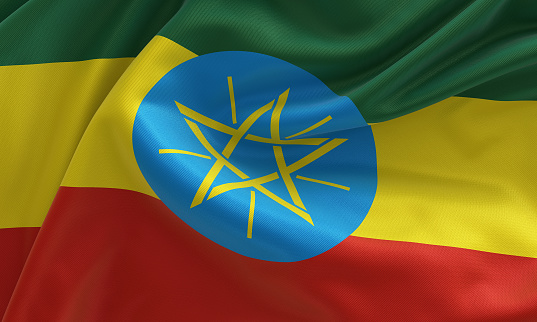The Ethiopia Economy
Located in the Horn of Africa, Ethiopia is a landlocked country split by the Great Rift Valley. The country is known for its archaeological finds dating back three million years. It is also known for its rock-cut churches and tombs.
Agriculture
Agricultural activities are important in the Ethiopian economy. It is estimated that 85 percent of Ethiopia’s population is involved in agricultural production. The agriculture sector contributes to about three-fourths of GDP, employs more than 70 percent of the labor force, and contributes over 80% of export earnings. However, the industry faces numerous challenges.
The Ethiopian agricultural sector is one of the largest contributors to exports. Coffee, which is the leading agricultural export, is a major contributor to Ethiopia’s economy. Oil crops are also important agricultural exports. Oil crops are exported to Africa and Asia.
The government’s Agricultural Development Led Industrialisation (ADLI) policy aims to address the challenges in the agricultural sector. It aims to enhance the participation of small holder peasants and build their capacities. The strategy also aims to build resilience in the agriculture sector.
The Ethiopian agriculture sector is highly dependent on subsistence small holder farmers. The majority of these small holder farmers produce crops on less than one hectare of land. However, the land tenure system in Ethiopia does not provide permanent boundaries of plots.
The Ethiopian government considers privatization of sugar factories a priority. It has drafted a new law to attract international investors. Its policy also emphasizes building capacities of local leaders. It has also formulated a national Climate Resilient Green Economy (CRGE) strategy.
Ethiopia’s agricultural export economy is subject to weather caprices. Agri-exports are primarily made up of unprocessed commodities. Imports, on the other hand, are mainly comprised of processed foods. However, without a significant increase in the domestic food industry, Ethiopia’s trade surplus will begin to diminish.
A major challenge to agricultural development in Ethiopia is land tenure. The country’s land tenure system is controversial. It has been criticized by some, while others argue that private land ownership removes structural constraints.
Textiles
During the first nine months of the 2010-11 fiscal year, Ethiopia earned $40.1 million by exporting textiles. The country’s textile exports account for 11.5% of its GDP. This figure is expected to increase in the years to come.
The Ethiopian Government is boosting the textile and garment sector through its industrialization policy. It is planning to generate more than a billion dollars in export earnings over the next five years. This plan includes an ambitious goal of creating 350,000 jobs in the textile sector by 2022.
Ethiopian companies need to adopt an aggressive marketing strategy. Currently, the country’s apparel is usually late to US markets. However, the industry has shown significant growth in recent years.
The country is also focusing on improving its infrastructure. It has built a number of industrial parks in recent years. The government plans to develop 12 more industrial estates in the coming years. Each of the industrial estates has large halls for lease and reliable electricity supply.
One of the country’s most important industries is the textile industry. Its imports include semi-finished goods, fuel, raw materials, and capital goods. Its exports include textiles and apparels.
The country’s new industrial estates are required to meet rigorous environmental standards. The government has also established a number of incentives and policies to attract foreign investments. The industry is also supported by the Government’s skills training programme.
There are a number of textile companies in Ethiopia. Some of them produce apparel for global markets. The country’s textile and apparel industry is seen as a model for other sectors. The industry is also a driving force behind Ethiopia’s economic growth.
The country is working with German experts to boost the industry. In 2008, the Ethiopian Textile Industry Development Institute trained 5,000 textile engineers.
Minerals and metal processing
Among the many factors that contribute to development, mining and metal processing play a key role. In some countries, mineral resources are a significant source of income. In others, they can be a drain on national economies. Fortunately, there are ways to make sure that your mineral industry is a positive contributor to your economy.
One of the best ways to do this is to develop national mineral resources. This requires investment in the mining industry, a long-term plan to develop your mineral resources, and a government that will provide financial and technical support. In Ethiopia, the mining sector is a key part of the government’s development program.
As you might expect, mining and metal processing are important parts of the Ethiopian economy. The country is located in northeast Africa, known as the Horn of Africa. It is home to a number of valuable metals and minerals, including gold, copper, platinum, and tantalum. It also has natural gas reserves.
Ethiopia’s economy has been on an upward trajectory in recent years, growing at an average rate of 10.3% a year. In December, the government approved a 10-year economic plan. The plan aims to generate a greater percentage of the country’s foreign exchange from minerals. In addition, it will focus on boosting Ethiopia’s export-oriented development strategy.
As the world moves away from fossil fuels, more and more mineral inputs are needed to power clean energy technologies. The International Energy Agency predicts that the world will need six times as many minerals by 2040. In the short term, prices are still higher than they were in the late 1980s.
The Mining Proclamation of 1993 introduced new laws and regulations for mining. These regulations provided a legal framework for investment and encouraged exploration of Ethiopia’s mineral and metal resources. In addition, the government began upgrading infrastructure to support mining.
Infrastructure development
Among the most significant features of the Ethiopian economy is its government’s interest in infrastructure development. Over the years, Ethiopia has invested heavily in the construction, mining, energy, health, and transport sectors. However, the country’s outcomes from infrastructure investment have not been impressive. Moreover, the economics of infrastructure development has been a subject of debate in the academic community.
Despite this, infrastructure development is often seen as an indispensable requirement for sustainable economic development. Among other factors, infrastructure facilitates market transactions and indirectly influences production. The efficiency of markets requires efficient interconnection between regions. The infrastructure of a country is its backbone, and thus an important element in the development of a national economy.
This paper examines the effects of infrastructure development on the Ethiopian economy. It tests the relationship between infrastructure development and economic growth using a vector error correction model (VECM). In particular, the effect of public capital on growth is examined. The effect depends on the quantity and quality of the capital stock in question.
In examining the impact of infrastructure on growth, we have to consider both the short-run and the long-run. In the short-run, our analysis suggests that a 100% increase in road infrastructure is not very helpful in promoting economic growth. In fact, the effects of such an increase are small compared to the production-function literature.
In the long run, however, a larger expenditure on infrastructure can have a profound growth promoting effect. The effect of public capital on growth depends on the quality of the capital stock in question. The effect of infrastructure on economic growth is not the same in every country. Nevertheless, our analysis finds that infrastructure is important in the long run.
Political stability
Throughout the past several years, Ethiopia has made important progress towards multiparty democracy. However, there remains a substantial gap in terms of opportunity for different groups. The country has also suffered from economic and social challenges arising from the COVID-19 pandemic. The government has not yet developed the necessary institutions to effectively handle this crisis.
Ethiopia is an increasingly diverse country with three major ethnic groups. Ethiopians are ethnically heterogeneous, with one-third Muslims and one-third Christians. Communal and religious tensions have flared up in many parts of the country.
The Ethiopian judiciary is not independent. It is heavily influenced by government policy. The court’s independence is limited due to institutional weaknesses, scarce resources, functional deficits, and political interferences. Corruption takes various forms.
In addition to the country’s economic crisis, Ethiopia has experienced a growing social crisis due to the COVID-19 pandemic. Food insecurity has worsened for rural households. The government estimates that 30 million Ethiopians could experience food consumption gaps in the coming year. The country has also suffered from disruptions in supply chains. The long-term impact of climate change is also negatively affecting pastoral livelihoods.
In April 2018, Ethiopia’s parliamentary representatives elected Oromo Abiy Ahmed as the country’s prime minister. He then proclaimed democratic reforms after his election. The government has detained many opposition leaders, including former Defense Minister Lemma Megersa. The government has also tried to control inflation.
In June 2018, the Ethiopian government announced that it was opening some sectors to foreign investment. It also announced plans to partially privatize state-owned enterprises. The government has also announced plans to abolish non-tariff barriers and trade monopolies.
Ethiopia is also experiencing persistent protests against the government. Civil society organizations have demonstrated their commitment to democratic values.



